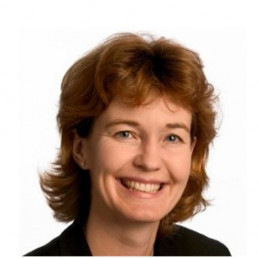The Telecommuter is Here to Stay
As a result of this newfound focus on workplace flexibility and an appreciation for the needed change of the traditional office concept, some businesses are now starting to consider ways in which they can find something in between working from home and the daily commute to the office. Curiously, many have returned to a concept that Jack Nilles first promoted in his book “The Telecommunications-Transportation Tradeoff” nearly half a century ago.
Struggling with LA commuter traffic in the 1970s, Nilles suggested that workers don’t need to be in a company’s corporate offices to be effective. Instead, he envisioned satellite offices located closer to where employees live, resulting in so-called telecommuters who are less stressed and more productive by avoiding the trauma and costs of the daily commute. In essence, what he suggested was to move the work to the workers instead of moving the workers to work.
The “New” Old Hub and Spoke Model Emerges
Not a million miles away from the idea of teleworkers and satellite offices, the new buzzword for reimagined office spaces post-COVID-19 is “Hub and Spoke“. Based on the image of a bicycle, “Hub and “poke” essentially describe parts of the wheel, with the hub is its centre and spokes originating from this centre and terminating at the outer rim of the wheel. In terms of an organisational model, the concept was first applied in the airport industry and describes a system of air transportation in which local airports offer flights to a central airport where international or long-distance flights are available. The hub airport then becomes the connecting location: London Heathrow or Amsterdam’s Schiphol, for example. Since the model was pioneered in the 1980s, it has been used by many other industries outside of aviation, including product logistics, social media distribution and online project management
Crucially, an office spoke does not have to be an office in the conventional sense, but instead could be any place from which staff can be productive. This could be in a different area of the same city, or in a different region/country altogether. It could be a single desk or a space with desks for hundreds of workers. It could be set up as a corporate satellite office, rent-a-space, public coworking spaces, or even shared offices.
Demand for co-working spaces is currently on the rise. Interest is primarily coming from individuals who are working in a hybrid model but might not be able to work effectively from home or are too far away from headquarters to justify the cost and time spent on commuting. Co-working spaces are not just more flexible, for employers they also remove a lot of the overheads (and new headaches) that come with running an office in the post-pandemic world.
Shared office space is another spoke alternative with growth potential. A good example of this option is the newly emerging Bank Hub model in the UK. This involves different banks taking turns using the same office space across different days of the week, which allows them to offer basic cash services on high streets, with meeting spaces for customers to speak to their own bank
Having multiple locations does increase business resilience and flexibility. By producing a heatmap of where employees live and matching them with client hotspots, businesses can get an idea of the alternative areas that might work best for their spokes.
Offices Become Social Places
Connectedness and a sense of belonging have been identified by employees as the main pain-points during enforced periods of remote work. Feeling a sense of belonging is an important intrinsic motivator. Abraham Maslow’s hierarchy of needs includes a sense of belonging as a major need that motivates human behaviour — on a level with the need for food, shelter and safety. Accordingly, Hub and Spoke strategies tend to centre foremost around the social aspect of working together, based around key components such as meeting rooms for business and social events, huddle rooms, cafeterias, wellness rooms and a casual, comfortable work environment supported by seamlessly integrated technology.
Spokes can provide staff with the option to access these office amenities and attached socialisation opportunities, with the added flexibility of being closer to home. By giving employees the option to work closer to home, rather than at home, spokes can prevent the pitfalls of remote work (such as isolation, poor collaboration, and makeshift desk setups), but also mirror some of its benefits, such as less time spent commuting. This model not only boosts local economies, but employees will also save money and precious time on their commute. As a result, a better work/life balance for employees leads to higher productivity and output for the business.
Conclusion
The global pandemic has highlighted that workflows have forever been altered by the rapid evolution of technology and that the path to productivity and better personal lives depends on the ability to adapt to a more flexible, less-finite working process, independent of location.
However, it is also important to realise that ongoing workplace transformation efforts do not necessarily mean the death of the office, but rather the growing need for a different office concept. The post-COVID-19 environment is a clear opportunity to reimagine the office as a more social place, centred on collaboration and networking opportunities.
Business leaders looking to move to a more flexible hybrid-based Hub & Spoke work model should ask the following questions:
- What are the spoke choices for staff?
- And what should these spaces look like?
- What technologies will be required?
- And how does a company create and curate a compelling experience?
To learn more about our upcoming research, please contact Meike Echerich, or head over to https://www.idc.com/eu and drop your details in the form on the top right.

